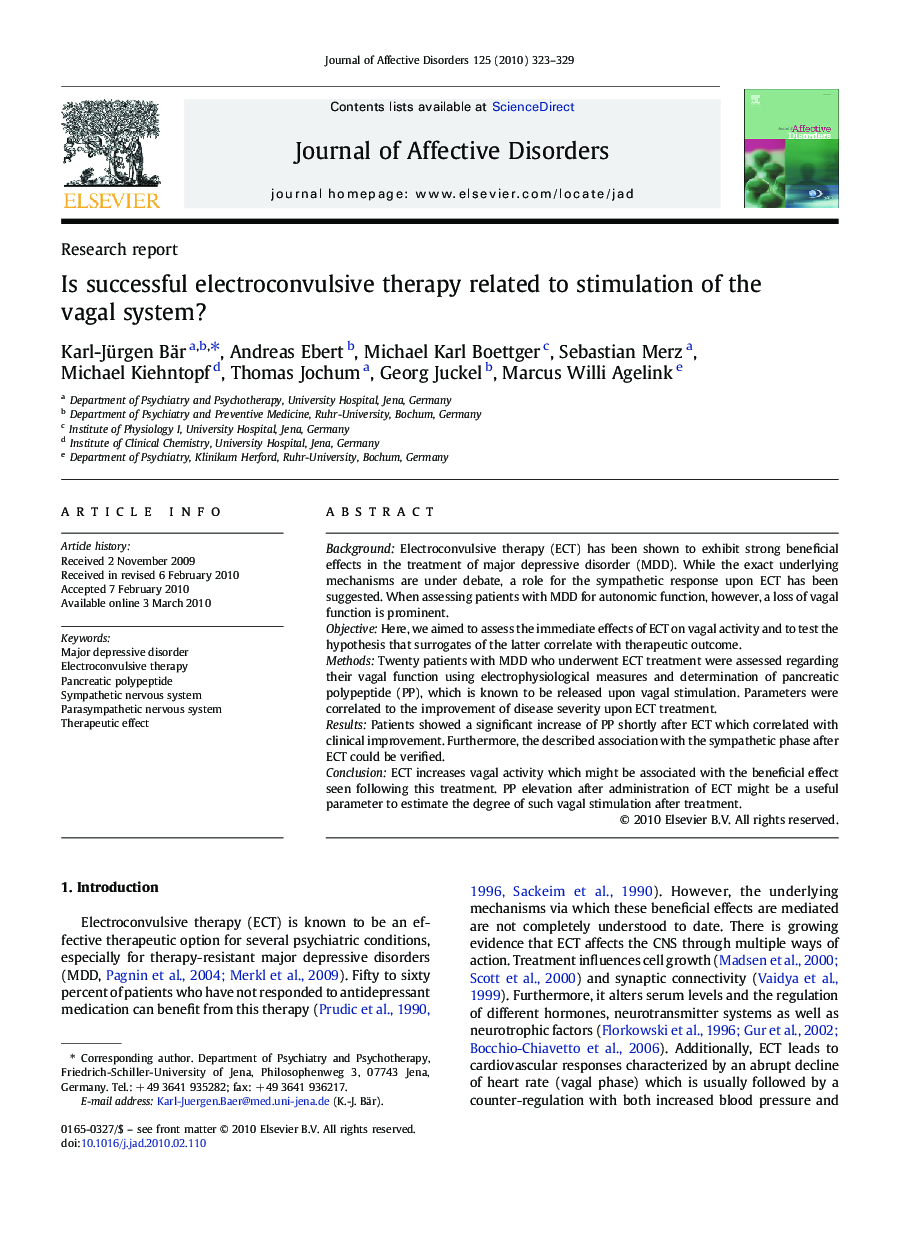| کد مقاله | کد نشریه | سال انتشار | مقاله انگلیسی | نسخه تمام متن |
|---|---|---|---|---|
| 6236382 | 1608195 | 2010 | 7 صفحه PDF | دانلود رایگان |

BackgroundElectroconvulsive therapy (ECT) has been shown to exhibit strong beneficial effects in the treatment of major depressive disorder (MDD). While the exact underlying mechanisms are under debate, a role for the sympathetic response upon ECT has been suggested. When assessing patients with MDD for autonomic function, however, a loss of vagal function is prominent.ObjectiveHere, we aimed to assess the immediate effects of ECT on vagal activity and to test the hypothesis that surrogates of the latter correlate with therapeutic outcome.MethodsTwenty patients with MDD who underwent ECT treatment were assessed regarding their vagal function using electrophysiological measures and determination of pancreatic polypeptide (PP), which is known to be released upon vagal stimulation. Parameters were correlated to the improvement of disease severity upon ECT treatment.ResultsPatients showed a significant increase of PP shortly after ECT which correlated with clinical improvement. Furthermore, the described association with the sympathetic phase after ECT could be verified.ConclusionECT increases vagal activity which might be associated with the beneficial effect seen following this treatment. PP elevation after administration of ECT might be a useful parameter to estimate the degree of such vagal stimulation after treatment.
Journal: Journal of Affective Disorders - Volume 125, Issues 1â3, September 2010, Pages 323-329